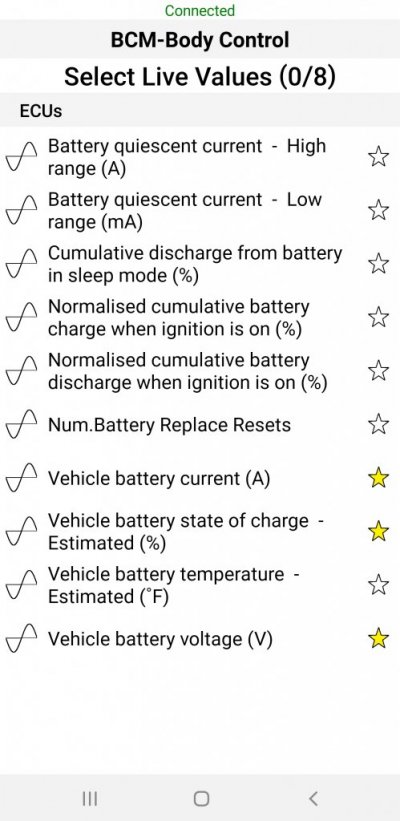Hi, all. I recently replaced both cigarette lighters in the center console with these little gems. I attached one to the secondary battery, which is now a LiFePo, and the other I'm just using with the stock cigarette lighter wiring.
I'm seeing some strange behavior of those voltmeters as I drive. If I am going downhill applying brakes or in the driveway idling, the voltage on both is around 14.5V. Which is also what I measure at idle with my Fluke multimeter.
But when I'm driving along at normal speed, the primary battery (or whatever supplies voltage to that cigarette lighter) is running about 12.2V, and the secondary battery is only at 13.4.
Since I have the GAP tool, I thought it would be helpful to check what the ECU sees the alternator doing. But trying to log any of the voltage/current options in the Body Control Module section of the GAP tool comes up with NA for all of them. Is there a trick to getting the GAP tool to monitor voltage that I can use? 2016 SCV6 LR4 HSE here for the complete alphabet soup.
I'm seeing some strange behavior of those voltmeters as I drive. If I am going downhill applying brakes or in the driveway idling, the voltage on both is around 14.5V. Which is also what I measure at idle with my Fluke multimeter.
But when I'm driving along at normal speed, the primary battery (or whatever supplies voltage to that cigarette lighter) is running about 12.2V, and the secondary battery is only at 13.4.
Since I have the GAP tool, I thought it would be helpful to check what the ECU sees the alternator doing. But trying to log any of the voltage/current options in the Body Control Module section of the GAP tool comes up with NA for all of them. Is there a trick to getting the GAP tool to monitor voltage that I can use? 2016 SCV6 LR4 HSE here for the complete alphabet soup.
As an Amazon Associate we earn from qualifying purchases.


